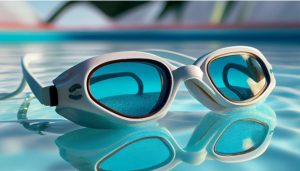Biocompatible Silicones for Swimming Goggles Seals
Goggles are a very important accessory when you go swimming. They keep water out of your eyes and help you see clearly in the water. Did you know that what the seals of these goggles are made from is very important? We shall explain why it is best to use biologically compatible silicones with swimming goggles. Additionally, if you love betting, for example, on Mel Bet NG, you’ll appreciate the reliability of good gear!
Overview of Swimming Goggles
Swimming goggles have come a long way since their early days. They are meant to give comfort and accuracy and also shield one’s vision. Here is what makes today’s swim goggles so special:
- Comfortable fit: The soft, flexible seals create a snug fit without any discomfort.
- Clear vision: High-quality lenses avoid rubbing off steam and give clear vision underwater.
- Durability: Made of strong materials which can withstand regular wear and chlorine.
- UV protection: Many come with UV protection to protect the eyes from harmful rays.
Overall, having the right kind of goggles will enhance your swimming experience by making it more enjoyable as well as safe.
The Significance of Biocompatible Materials
In swimming goggles, biocompatible materials are essential because they are safe for prolonged contact with skin. They reduce allergies and skin irritations, hence they can be used by people from all age groups who swim frequently. Hypoallergenic silicones therefore become an ideal choice for goggle seals.
Further still, it is worth noting that biocompatible silicones are known to be durable and flexible in nature. These ensure that there is no leaking around the eyes or any other form of discomfort associated with them during use. This implies that one can enjoy their swim without thinking about water leakage or irritation near the eyes caused by them.

Advancement in the Evolution of Silicone Seals in Goggles
Swimming goggles have seen quite a few changes over time. The sealants have been the major game changer as soon as silicone was introduced. It has quickly become the standard material for goggle seals due to its flexibility and durability. It is biocompatible so it can stay in contact with skin for long without any harmful effect, thus becoming an excellent option for all age groups of swimmers.
Benefits of Silicone Seals
Silicone seals come with a number of advantages that improve swimming overall. For starters, they give an excellent fit because silicone is very flexible; hence fits well on the face since it has to be waterproof sealed. This ensures you do not suffer the irritation of water going into your eyes while swimming anymore.
Moreover, silicone is highly resistant to wear and tear. It retains its shape and form even when exposed to chlorine chemicals and saltwater that are harsh on other materials used in sealing goggles, such as rubber or plastic. In addition, this toughness guarantees longer life spans for them, hence more value for money. Furthermore, being hypoallergenic, silicone does not cause allergic reactions, which makes it fantastic for individuals with delicate skin. Therefore, silicone’s unique features make them appropriate sealants for swimming goggles.
Modernisation of Silicone Technology
Silicone technology has undergone spectacular developments over recent years. Manufacturers have been working towards improving their silicone properties in different ways possible. Softening up silicone materials has been one of these improvements aimed at developing better fitting ones that relieve pressure around the eyes and prevent red marks.
Another important stride involves adding antibacterial characteristics to silicones. This ensures no bacteria or mould grows on your goggles, which means cleaner products, thereby guaranteeing hygiene during use periods and extending their lifespan. These improvements enhance both comfort and safety levels while also increasing the longevity of goggles in general. Ongoing research will continue enhancing silicone seals contained in swimming goggles, making them better day by day.
Comparative Analysis with Other Materials
When people are making decisions about swimming goggle seal materials, it is important that they consider other choices. Here is a brief look at alternatives to silicone:
- Rubber: This material is cheaper than others when used in goggles. It does not stretch easily and may irritate the skin.
- PVC: Tougher but not as comfortable as silicone. It also has harmful substances.
- Neoprene: More comfortable and pliable, though less non-allergenic than silicone.
- TPE (Thermoplastic Elastomer): It feels good to the touch because it is soft and springy, but again, it will never be as long-lasting as silicone.
Although each material carries its own advantages and drawbacks, silicone still has a strong appeal to many swimmers.
Goggle Design of the Future
The future of swimming goggles looks bright with new trends that have emerged recently. One interesting trend is incorporating smart technology into them. Just imagine goggles that could track your swimming performance and provide you with real-time feedback. This innovation could revolutionise training for both amateur and professional swimmers alike.
Another trend here is sustainability. Manufacturers are exploring eco-friendly materials and production methods too. This serves two purposes: protection of the environment while meeting fierce demand from eco-conscious consumers. The marriage between advanced technology and green practices shall shape future goggles, making them smarter and greener too.
Final Words
Swimming goggle seals are being reinvented by biocompatible silicones which render incomparable comfort levels and safety standards. With ongoing developments, swimming goggles will become increasingly efficient as well as user-friendly gadgets that everyone will love using, whether one swims occasion


